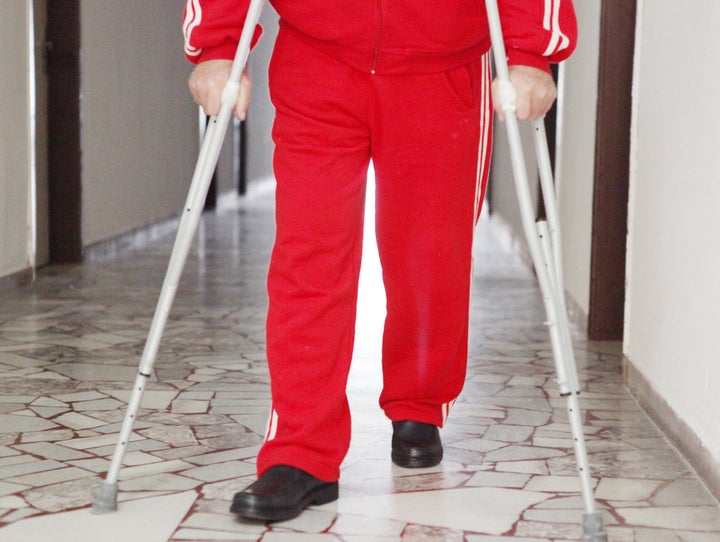A paralysed patient who suffered a severe spinal cord injury has regained the ability to walk with crutches after undergoing groundbreaking treatment involving virtual reality and robotics.
Eight patients went through the same treatment and each has recovered some sensation in their legs, while four reported such strong muscle control that their diagnosis was upgraded from complete to partial paralysis after a year.
Scientists, led by neuroscientist Miguel Nicolelis, of Duke University in North Carolina, US, used a virtual reality system which worked with the patients’ own brain activity to simulate control of their legs during the long-term training programme.
Researchers at the Walk Again Project in Sao Paulo, Brazil, believe the treatment could offer hope to people who have suffered spinal cord injuries, strokes and other conditions where they will need to regain strength, mobility and independence.
Among those who took part in the rehabilitation training, five people had been paralysed for at least five years while two had been paralysed for more than a decade.
Most patients said they had better bladder control and bowel function which meant they could cut back on much-need laxatives and catheters.
As first reported in the Independent, the researchers stated in an article in the journal, Scientific Reports, that one patient had regained the ability to walk: “In [one] example, Patient 7, started at score 6 and progressed all the way to score 12, which means that he/she was capable of walking with two crutches and lower limb orthoses (hip-knee-ankle-foot orthoses), while requiring no assistance by a therapist.”
This is encouraging for other patients as these changes reduce the risk of common infections and causes of death in people with chronic paralysis, according to Nicolelis.
He said: “We couldn’t have predicted this surprising clinical outcome when we began the project.
“What we’re showing in this paper is that patients who used a brain-machine interface for a long period of time experienced improvements in motor behaviour, tactile sensations and visceral functions below the level of the spinal cord injury.
“Until now, nobody has seen recovery of these functions in a patient so many years after being diagnosed with complete paralysis.”

The eight patients spent at least two hours a week using devices controlled through their brain signals. They were all taught how to operate their own avatar, or digital likeness, in a virtual reality environment.
They wore fitted caps lined with 11 non-invasive electrodes to record their brain activity. The patients were asked to imagine walking in the virtual world and it appears that “the training reinserted the representation of lower limbs into the patients’ brains”, according to Mr Nicolelis.
More challenging physical equipment was later introduced to further test patients’ control over their posture, balance and ability to use upper limbs. These included walking devices and overhead harnesses.
Previous success from The Walk Again Project include Julian Pinto, a young paraplegic man, being able to kick a football during the 2014 World Cup opening ceremony by using a brain-controlled robotic exoskeleton.
The patients worked with different training systems, including the exoskeleton Mr Pinto wore at the 2014 World Cup.
Mr Nicolelis is an expert in his field having worked for nearly 20 years to build and hone systems that record hundreds of simultaneous signals from neurons in the brain, to extract motor commands and translate them into movement.
Encouraged by the results so far, the research team now hopes that weekly training as part of rehabilitation could help patients re-engage spinal cord nerves that survived the impact of car crashes, falls and other paralysing trauma of the lower limbs.
Mr Nicolelis said: “One previous study has shown that a large percentage of patients who are diagnosed as having complete paraplegia may still have some spinal nerves left intact.
“These nerves may go quiet for many years because there is no signal from the cortex to the muscles.
“Over time, training with the brain-machine interface could have rekindled these nerves.
“It may be a small number of fibres that remain, but this may be enough to convey signals from the motor cortical area of the brain to the spinal cord.”
The progress of the patients, who have now had training for more than two years, will continue to be tracked by the researchers.